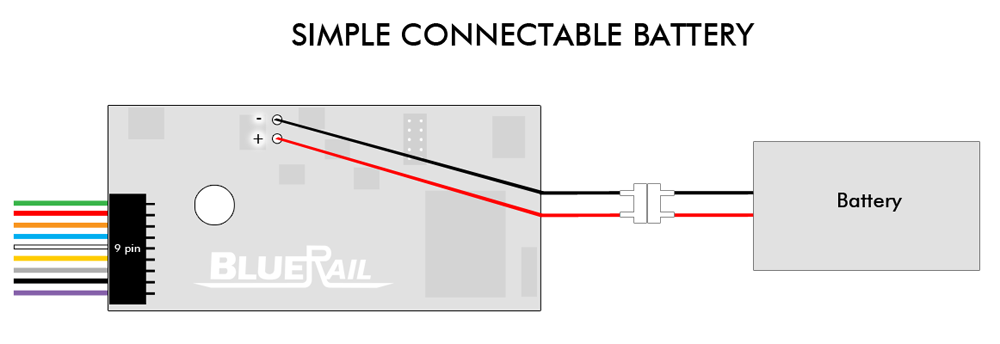Isolating Motor and Lights from the Frame
Category : Articles
In order for your BlueRail board to work properly, it is important that both the motor and all lights are not in contact with either the chassis or the rails. If your locomotive is already “DCC-Ready” this is probably already taken care of. Here are the steps to verify the motor brush terminals are isolated from the chassis and the rail pickups. This will require an ohmmeter or a continuity tester.
1) Remove the shell from the locomotive (and the tender for steam installations) and place your locomotive on a section of non-powered track.
2) Within the locomotive, locate and identify all wires (+/-) to the rails and all wires (+/-) to the motor connections.
TEST ISOLATION OF MOTOR
3) Disconnect all wires that lead to the motor terminals.
4) Using your ohmmeter or continuity tester, connect one probe to the negative motor terminal, and touch the other probe to the chassis – making sure there is no continuity. In a similar fashion, touch the second probe to each of the rails and verify there is no continuity to either rail.
5) Repeat this process for the positive motor terminal and verify there is no continuity to the chassis or either of the rails.
TEST ISOLATION OF LIGHTS
6) Disconnect all wires that lead to each light.
7) Repeat the above steps for each light connection to verify there is no continuity to the chassis or either of the rails.
If you find continuity, you must correct the problem in order to make your locomotive “DCC-Ready” and capable of supporting a BlueRail board. Some motors sit directly on the chassis or are connected by a spring clip grounding the motor to the chassis. This continuity can often be corrected by either removing the spring clip, or inserting a plastic washer between the motor and the chassis.

 Because bluetooth does not rely on track for loco control, it is an excellent method for battery powered train operation (also known as “Dead Rail” or “Power On Board”). BlueRail plugin boards come with 2 connection points (+/-) which can be wired to a battery. Below are a few ways you may choose to wire your battery.
Because bluetooth does not rely on track for loco control, it is an excellent method for battery powered train operation (also known as “Dead Rail” or “Power On Board”). BlueRail plugin boards come with 2 connection points (+/-) which can be wired to a battery. Below are a few ways you may choose to wire your battery.



